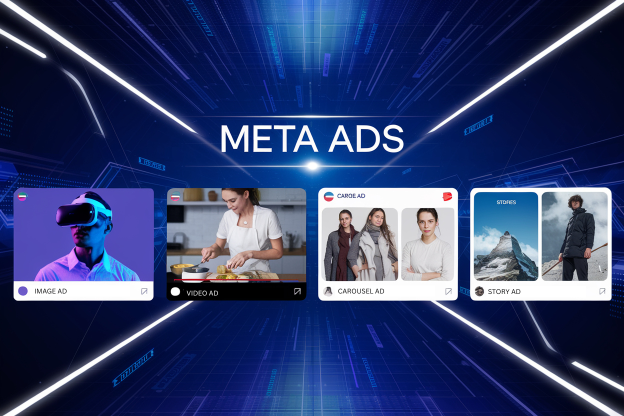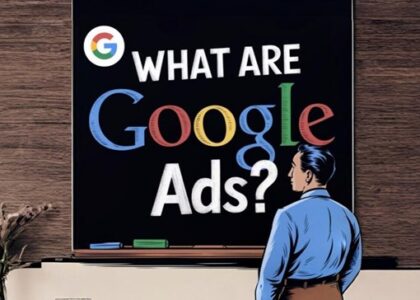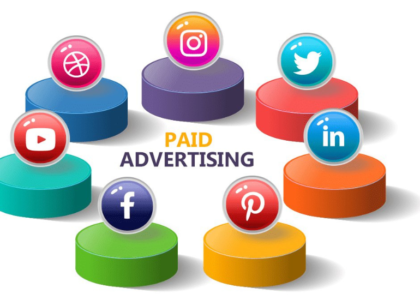Introduction
Meta ads are at the forefront of the significant change in advertising that has occurred in the current digital era. The advertising solutions provided by Meta (previously Facebook), known as Meta Ads, enable companies to engage with their audience in creative and effective ways. Meta offers a strong environment for contacting millions of potential clients through platforms like Facebook, Instagram, and Messenger. These platforms, which provide various tools to construct effective campaigns, are vital to the digital advertising scene.
What are Meta Ads?
The advertising campaigns that operate on Meta’s platforms—Facebook, Instagram, Messenger, and the Audience Network—are referred to as Meta Ads. With the use of Meta’s sophisticated techniques and insights, these advertisements are made to assist companies in showcasing their goods or services to extremely targeted customer segments. Meta Ads give businesses the freedom to design campaigns that support their goals, whether they are promoting a local business, introducing a new product, or establishing an online presence.
Why are Meta Ads Important for Businesses?
Meta Ads are indispensable for modern businesses because they provide unparalleled opportunities to engage with a massive and diverse audience. Whether you’re a small business or a multinational corporation, Meta Ads offers scalable solutions tailored to your goals. From building brand awareness to driving sales and leads, Meta Ads empower businesses to achieve measurable results.
Businesses can reach potential clients on social media platforms, where they spend the majority of their time, by utilizing meta-advertisements. Advertising on meta platforms guarantees that companies stay visible and competitive in the digital age as engagement shifts to online.
Meta’s Platforms
Globally, Meta’s platforms—which include Facebook, Instagram, and Messenger—serve billions of users. This ecosystem gives companies the ability to:
- Engage users on the platform of their choice.
- Use distinctive ad formats that are suited to the advantages of each platform.
- For a unified message, develop integrated campaigns.
Facebook, for instance, continues to be a center for audience segmentation and community-driven engagement. Instagram’s emphasis on visual storytelling makes it the perfect platform for companies trying to engage consumers with imaginative content. Conversely, Messenger enables tailored communication, assisting companies in cultivating client relationships.
Benefits of Meta Ads
1. Massive Audience Reach
With billions of active users, Meta Ads allow businesses to reach an incredibly wide audience across various demographics, interests, and locations. This reach ensures businesses can tap into new markets and expand their customer base effectively.
2. Advanced Targeting Options
Meta’s advanced targeting tools let businesses define their audience based on age, location, behavior, and interests. This precision ensures that your ads are seen by the right people at the right time. Furthermore, features like lookalike audiences allow businesses to find new customers like their existing ones.
3. Cost-Effectiveness
Compared to traditional advertising methods, Meta Ads are highly cost-effective. Businesses can set budgets that suit their needs and still achieve impactful results. Flexible bidding options and real-time adjustments further enhance cost efficiency.
4. Analytics and Performance Tracking
Meta Ads provide detailed insights into ad performance. Metrics such as impressions, clicks, conversions, and ROI allow businesses to fine-tune their campaigns for better outcomes. These analytics help understand customer behavior and optimize future campaigns.
Importance of Meta Ads
In a competitive marketplace, Meta Ads serve as a vital tool for businesses to:
- Stay relevant and visible in the digital space.
- Build meaningful connections with their audience.
- Drive customer engagement and loyalty.
By leveraging the power of Meta’s platforms, businesses can create impactful advertising strategies that drive growth and success. In addition to reaching a global audience, Meta Ads offer tools for localized targeting, ensuring relevance at a community level.
Types of Meta Ads
Image Ads
These ads use compelling visuals to grab attention and convey a message quickly. Simple yet effective, image ads are perfect for highlighting a product or service at a single glance.
2. Video Ads
Video ads are perfect for storytelling and showcasing products in action, driving higher engagement. With the rise of video consumption, these ads have become a staple for brands looking to create an emotional connection with their audience.
3. Carousel Ads
Carousel ads allow businesses to showcase multiple images or videos in a single ad, ideal for highlighting different features or products. They’re especially useful for e-commerce businesses aiming to display a variety of items.
4. Collection Ads
These ads combine videos or images with product catalogs, making it easy for users to browse and shop directly. They’re designed to streamline the shopping experience, encouraging quick conversions.
5. Stories and Reels Ads
Stories and Reel ads appear in immersive, full-screen formats, making them perfect for capturing attention on mobile devices. These formats are ideal for brands targeting younger audiences who engage heavily with short-form content.

Best Practices for Effective Meta Ads
1. A/B Testing
Experience with different ad elements, such as headlines, visuals, and CTAs, to determine what resonates best with your audience. Continuous testing ensures optimal performance.
2. Leveraging Retargeting
Use retargeting strategies to re-engage users who have previously interacted with your brand but haven’t converted. This approach is particularly effective for boosting conversions.
3. Keeping Content Mobile-Friendly
Since most users access Meta’s platforms via mobile devices, ensure that your ads are optimized for mobile viewing. Clean visuals and concise copy are key to engaging mobile audiences.
4. Using Meta Pixel for Tracking Conversions
Implement Meta Pixel on your website to track user interactions and measure the effectiveness of your ad campaigns. This data is invaluable for refining strategies and improving ROI.
Common Mistakes to Avoid
1. Poor Targeting
Failing to define a clear target audience can result in wasted ad spending and low engagement. Always use Meta’s targeting tools to refine your audience.
2. Ignoring Analytics
Overlooking performance metrics prevents businesses from identifying what’s working and optimizing accordingly. Regularly reviewing analytics is crucial for success.
3. Overloading the Ad with Information
Cluttered ads with too much text or visuals can confuse users and reduce effectiveness. Keep your ads simple and focused, ensuring the message is clear.
Conclusion
Meta Ads offer businesses a dynamic and effective way to reach their target audience, drive engagement, and achieve their goals. By understanding the benefits, types, and best practices, businesses can unlock the full potential of Meta Ads and stay ahead in the digital advertising game. With the right strategies and tools, Meta Ads can be a game-changer for your brand’s online presence. Start leveraging Meta Ads today to take your business to the next level!






